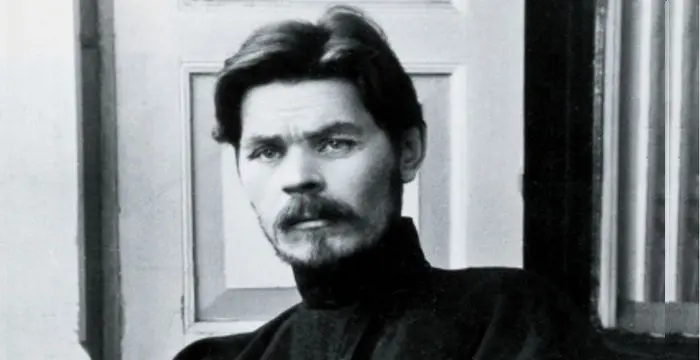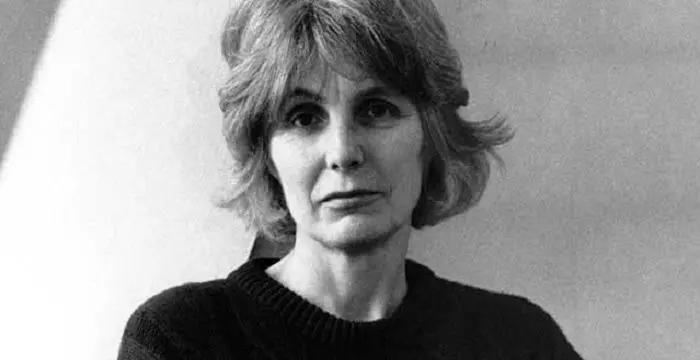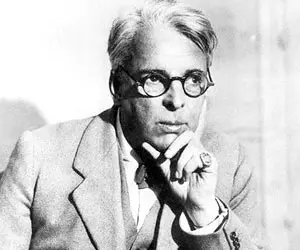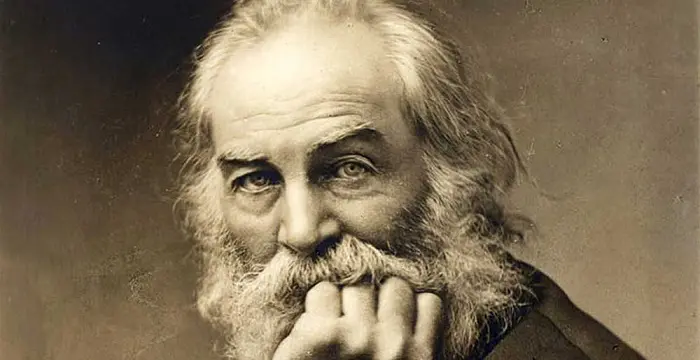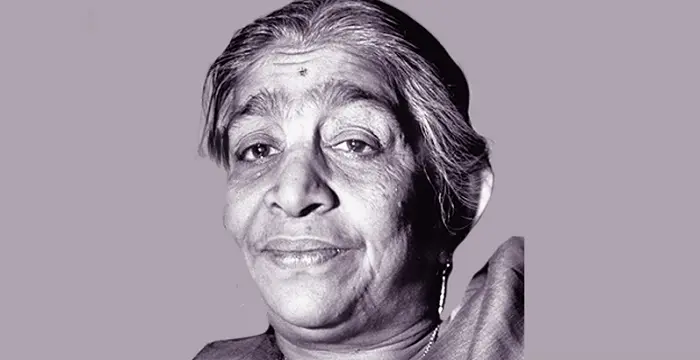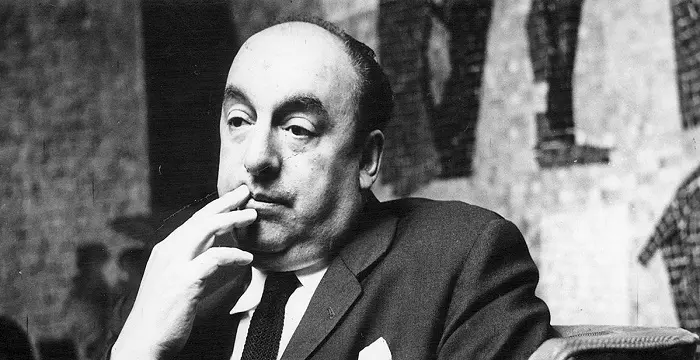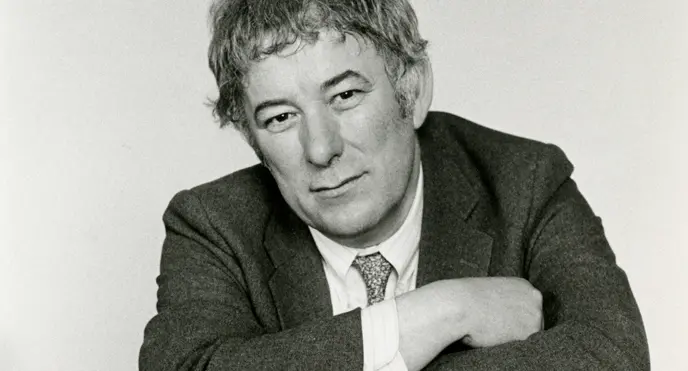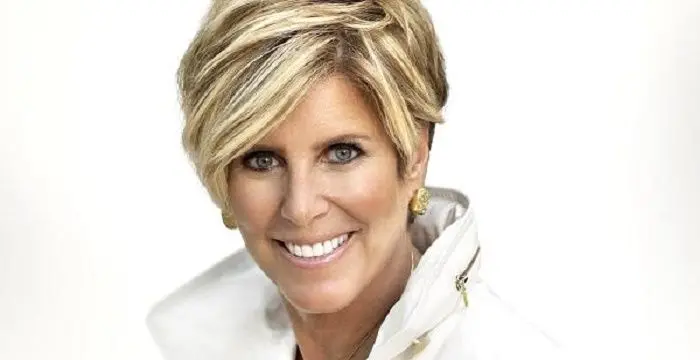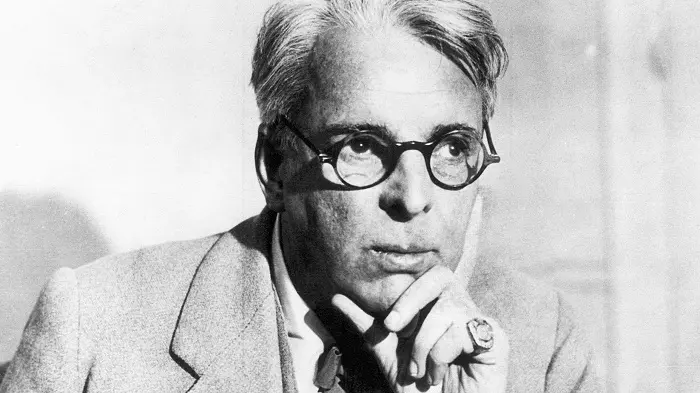
W B Yeats - Poets, Life Achievements and Personal Life
W B Yeats's Personal Details
William Butler Yeats was an Irish poet and playwright
| Information | Detail |
|---|---|
| Birthday | June 13, 1865 |
| Died on | January 28, 1939 |
| Nationality | Irish |
| Famous | Writers, Poets, Playwrights, Dramatist, Poets |
| Spouses | Georgie Hyde-Lees (m. 1917–1939) |
| Siblings | Elizabeth, Jack, Susan Mary |
| Universities |
|
| Birth Place | Ireland |
| Gender | Male |
| Father | John Butler Yeats |
| Mother | Susan Mary Pollexfen |
| Sun Sign | Gemini |
| Born in | Ireland |
| Famous as | Poet & Dramatist |
| Died at Age | 73 |
// Famous Dramatist
Maxim Gorky
Alexei Maximovich Peshkov, better known as Maxim Gorky, was a Russian author. This biography of Gorky provides detailed information about his childhood, life, works, achievements and timeline.
Ben Jonson
Ben Jonson was an acclaimed English playwright, poet, and literary critic. This biography provides detailed information about his childhood, life, achievements, works and timeline.
Caryl Churchill
Caryl Churchill is an English dramatist and women’s right activist, known for her non-conventional plays. This biography of Caryl Churchill provides detailed information about her childhood, life, achievements, works & timeline.
W B Yeats's photo
Who is W B Yeats?
William Butler Yeats was a famous Irish poet, dramatist and one of the pioneers of the literary world in the 20th century. The author was also a member of the Irish Senate and served it for two terms. He made significant contributions to both English and Irish literature, and is particularly remembered for his role in reviving the latter. The son of a prominent portrait painter, he became interested in literature and poetry at a young age. During his growing years he witnessed the rise of the Home rule movement and the nationalist revival which greatly impacted his young mind. He began writing when he was still in his teens and soon blossomed into a promising writer cum poet. Along with writing he was also interested in other forms of art and was deeply inclined towards politics. Along with Lady Gregory, Edward Martyn, and others, Yeats founded the Abbey Theatre, and served as its chief during its early years. Taking forward his love for politics, he served as an Irish Senator for two terms during his later years. In 1923, Yeats was awarded the Nobel Prize in literature making him the first Irishman to be honored with the award.
// Famous Poets
Walt Whitman
Walt Whitman was an American poet, journalist and humanist. Read this brief biography to find more on his life & timeline.
Sarojini Naidu
Sarojini Naidu was an Indian freedom fighter and poet. Read this brief biography to find more on her life.
Pablo Neruda
Pablo Neruda was a Chilean poet, politician and Nobel laureate. Go through this biography to learn more about his profile, childhood, life and timeline.
Childhood & Early Life
William Butler Yeats was born on 13 June 1865 in County Dublin, Ireland to John Butler Yeats, a lawyer turned portrait painter and Susan Mary Pollexfen, daughter of a wealthy family from county Sligo. He had a brother named Jack and two sisters, namely, Elizabeth and Susan Mary. His father was a supporter of nationalism and the nationalist movement in the country.
He received his early education at home from his parents and entered the Godolphin school in 1877. He was an average student though he developed a deep interest in literature and poetry.
After spending a few years in England, the family moved to Dublin where he resumed his education at Dublin's Erasmus Smith High School in 1881. It was during this time that he began writing seriously. From 1884 to 1886, William attended the Metropolitan School of Art—now the National College of Art and Design.
Career
William Butler Yeats’ initial works were heavily influenced by Percy Bysshe Shelley and Edmund Spenser, and eventually he turned to Irish mythology and folklore and the writings of William Blake.
He returned to London in the late 1880s and became acquainted with writers Oscar Wilde, Lionel Johnson and George Bernard Shaw. During this time he also met Maud Gonne, an ardent nationalist and supporter of Irish independence. She became his muse and greatly inspired his works.
In 1890, Yeats joined the Hermetic Order of the Golden Dawn. The same year also saw the founding of the Rhymers’ Club in which Yeats was a co-founder. The club consisted of a group of London-based poets who met regularly in a Fleet Street tavern to recite their verse. Yeats then proceeded to publish two anthologies of the Rhymers' work, the first one in 1892 and the second one in 1894.
Along with literature, he also loved the theater and wrote several plays. He collaborated with the likes of Lady Gregory, Edward Martyn and George Moore to establish the Irish Literary Theatre for the purpose of performing Irish and Celtic plays. As a dramatist, his successful works included ‘The Countess Cathleen’ (1892), ‘The Land of Heart’s Desire’ (1894) and ‘The King’s Threshold’ (1904).
He also had a major role to play in the founding of the Abbey Theatre, also known as the National Theatre of Ireland, which first opened in 1904. The theatre was closely associated with the Irish Literary Revival--also called the Irish Literary Renaissance-- a revival of interest in Ireland's Gaelic heritage and the growth of Irish nationalism from the middle of the 19th century.
The new theatre was a great success in its initial years. Its popularity was primarily due to the association of well-known playwrights like Yeats and John Millington Synge; John Millington Synge was considered one of the foremost English-language dramatists of his era. Due to its association with many writers, Abbey gained its reputation as a writers' theatre.
Yeats has a deep interest in mysticism, spiritualism, occultism and astrology as well. In 1911, he became a member of the paranormal research organization "The Ghost Club" and remained interested in the subjects throughout life.
In 1913, Yeats wrote the preface for the English translation of Rabindranath Tagore's ‘Gitanjali’ (Song Offering), the seminal work which earned Tagore the Nobel Prize in literature that year.
Even though an Irish nationalist at heart, Yeats played down his revolutionary spirit and distanced himself from the intense political landscape for several years. Finally in 1922, he was appointed Senator for the Irish Free State, a position he held for six years.
He continued to write until his death. He was noted for both his lyrical and dramatic works, the best of which are considered to be ‘The Wild Swans at Coole’ (1919), ‘Michael Robartes and the Dancer’ (1921), ‘The Tower’ (1928), ‘The Winding Stair and Other Poems’ (1933), and ‘Last Poems and Plays’ (1940).
Major Works
His book of poems, ‘Michael Robartes and the Dancer’ is one of his best known poetry collections; the book includes poems like ‘Solomon And The Witch’, ‘An Image From A Past Life’, ‘The Rose-Tree’, ‘On A Political Prisoner’ and ‘The Leaders Of The Crowd.’ Another poignant poem in the book is ‘A Prayer For My Daughter’ addressed to his daughter, Ann.
His short play ‘The Resurrection’ depicts a discussion among three men ("The Greek" or "The Egyptian," "The Hebrew," and "The Syrian") who are among the first to meet the resurrected Christ.
His book length study, ‘A Vision’ is among his most celebrated works. He covered various philosophical, historical, astrological, and poetic topics in the work which is counted amongst the most remarkable channeled documents of the 20th century. The book has been compared to ‘Eureka: A Prose Poem’, the final major work of Edgar Allan Poe.
Another one of his popular poetry collections is ‘The Winding Stair’ where the title refers to the staircase in the Thoor Ballylee castle which Yeats had purchased and lived in with his family for some time. It included poems such as ‘Spilt Milk’, ‘The Nineteenth Century and After’, ‘Statistics’, ‘Three Movements’, and ‘The Seven Sages.’
Awards & Achievements
W. B. Yeats was awarded the Nobel Prize in Literature in 1923 "for his always inspired poetry, which in a highly artistic form gives expression to the spirit of a whole nation". Ireland had newly become independent at that time and he was the first Irish man to be honored with the coveted prize.
Personal Life & Legacy
In 1889, Yeats met Maud Gonne, an ardent Irish nationalist. He was smitten by her from the very beginning and she soon became his muse. He was deeply in love with her and proposed marriage to her several times, only to be turned down. Maud later went on to marry another man.
He became acquainted with Olivia Shakespear, a British novelist and playwright, in 1894. The two began an affair even though Olivia was married at that time. The affair came to an end in 1897.
Maud Gonne’s marriage broke down and eventually her former husband died. This gave rise to hope in Yeats’ mind that she might now marry him. Even though she agreed to have a physical relationship with him, she once again refused his marriage proposal.
Middle-aged by now, Yeats proposed to 25-year-old Georgie Hyde-Lees, and the young lady agreed to marry him despite the fact that Yeats was now 51. Against all odds, the marriage proved to be a happy one and produced two children. The successful marriage, however, did not prevent the writer from having romantic liaisons with other women.
W.B. Yeats died on January 28, 1939, at the age of 73, at the Hôtel Idéal Séjour, in Menton, France.
// Famous Poets
Charles Bukowski
Charles Bukowski was a German-born American novelist, short story writer and poet. With this biography, learn in details about his childhood, life, works, career and timeline
Seamus Heaney
Nobel Laureate Seamus Heaney was an Irish poet, playwright and translator. Know about his profile, childhood, life and timeline in the biography below.
Walt Whitman
Walt Whitman was an American poet, journalist and humanist. Read this brief biography to find more on his life & timeline.
W B Yeats's awards
| Year | Name | Award |
|---|---|---|
Other | ||
| 0 | Nobel Prize in Literature (1923) | |
W B Yeats biography timelines
- // 13th Jun 1865William Butler Yeats was born on 13 June 1865 in County Dublin, Ireland to John Butler Yeats, a lawyer turned portrait painter and Susan Mary Pollexfen, daughter of a wealthy family from county Sligo. He had a brother named Jack and two sisters, namely, Elizabeth and Susan Mary. His father was a supporter of nationalism and the nationalist movement in the country.
- // 1877He received his early education at home from his parents and entered the Godolphin school in 1877. He was an average student though he developed a deep interest in literature and poetry.
- // 1881 To 1886After spending a few years in England, the family moved to Dublin where he resumed his education at Dublin's Erasmus Smith High School in 1881. It was during this time that he began writing seriously. From 1884 to 1886, William attended the Metropolitan School of Art—now the National College of Art and Design.
- // 1889In 1889, Yeats met Maud Gonne, an ardent Irish nationalist. He was smitten by her from the very beginning and she soon became his muse. He was deeply in love with her and proposed marriage to her several times, only to be turned down. Maud later went on to marry another man.
- // 1890 To 1894In 1890, Yeats joined the Hermetic Order of the Golden Dawn. The same year also saw the founding of the Rhymers’ Club in which Yeats was a co-founder. The club consisted of a group of London-based poets who met regularly in a Fleet Street tavern to recite their verse. Yeats then proceeded to publish two anthologies of the Rhymers' work, the first one in 1892 and the second one in 1894.
- // 1894 To 1897He became acquainted with Olivia Shakespear, a British novelist and playwright, in 1894. The two began an affair even though Olivia was married at that time. The affair came to an end in 1897.
- // 1904He also had a major role to play in the founding of the Abbey Theatre, also known as the National Theatre of Ireland, which first opened in 1904. The theatre was closely associated with the Irish Literary Revival
- // also called the Irish Literary Renaissance
- // a revival of interest in Ireland's Gaelic heritage and the growth of Irish nationalism from the middle of the 19th century.
- // 1911Yeats has a deep interest in mysticism, spiritualism, occultism and astrology as well. In 1911, he became a member of the paranormal research organization "The Ghost Club" and remained interested in the subjects throughout life.
- // 1913In 1913, Yeats wrote the preface for the English translation of Rabindranath Tagore's ‘Gitanjali’ (Song Offering), the seminal work which earned Tagore the Nobel Prize in literature that year.
- // 1922Even though an Irish nationalist at heart, Yeats played down his revolutionary spirit and distanced himself from the intense political landscape for several years. Finally in 1922, he was appointed Senator for the Irish Free State, a position he held for six years.
- // 1923W. B. Yeats was awarded the Nobel Prize in Literature in 1923 "for his always inspired poetry, which in a highly artistic form gives expression to the spirit of a whole nation". Ireland had newly become independent at that time and he was the first Irish man to be honored with the coveted prize.
- // 28th Jan 1939W.B. Yeats died on January 28, 1939, at the age of 73, at the Hôtel Idéal Séjour, in Menton, France.
// Famous Writers
Joyce Meyer
Joyce Meyer is a Christian author and speaker. This biography provides detailed information about her childhood, life, achievements, works & timeline
Temple Grandin
Temple Grandin is a well-known American writer, autistic activist and animal expert. This biography profiles her childhood, life, achievements, career and timeline
Tennessee Williams
Tennessee Williams was one of the greatest playwrights of the 20th century. This biography of Tennessee Williams provides detailed information about his childhood, life, achievements, works and timeline.
Charles Bukowski
Charles Bukowski was a German-born American novelist, short story writer and poet. With this biography, learn in details about his childhood, life, works, career and timeline
Susan Sontag
Susan Sontag is an American critical essayist, cultural analyst, novelist, political activist, filmmaker and playwright of international repute. Read on to find out more about her childhood, career, profile and timeline.
Suze Orman
Suze Orman is an American television host, financial advisor, author and motivational speaker, famous for her ‘The Suze Orman Show’ on CNBC. This biography profiles her childhood, life, career, works, achievements and timeline.
W B Yeats's FAQ
What is W B Yeats birthday?
W B Yeats was born at 1865-06-13
When was W B Yeats died?
W B Yeats was died at 1939-01-28
Where was W B Yeats died?
W B Yeats was died in Menton, France
Which age was W B Yeats died?
W B Yeats was died at age 73
Where is W B Yeats's birth place?
W B Yeats was born in Ireland
What is W B Yeats nationalities?
W B Yeats's nationalities is Irish
Who is W B Yeats spouses?
W B Yeats's spouses is Georgie Hyde-Lees (m. 1917–1939)
Who is W B Yeats siblings?
W B Yeats's siblings is Elizabeth, Jack, Susan Mary
What was W B Yeats universities?
W B Yeats studied at National College of Art and Design (1884 – 1886)
Who is W B Yeats's father?
W B Yeats's father is John Butler Yeats
Who is W B Yeats's mother?
W B Yeats's mother is Susan Mary Pollexfen
What is W B Yeats's sun sign?
W B Yeats is Gemini
How famous is W B Yeats?
W B Yeats is famouse as Poet & Dramatist
